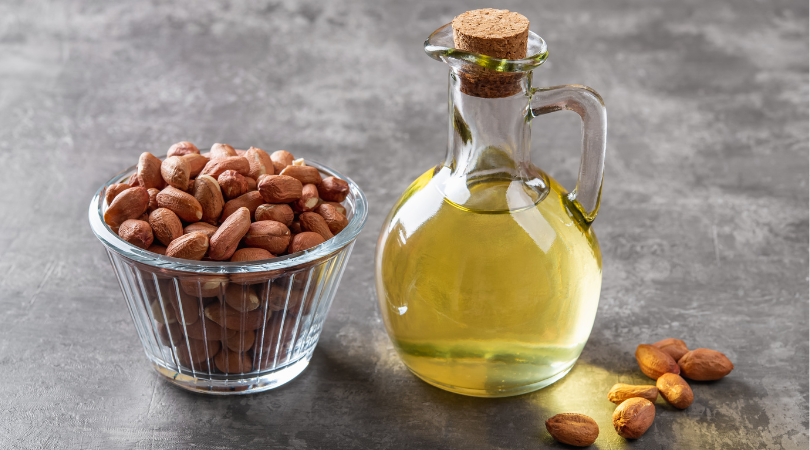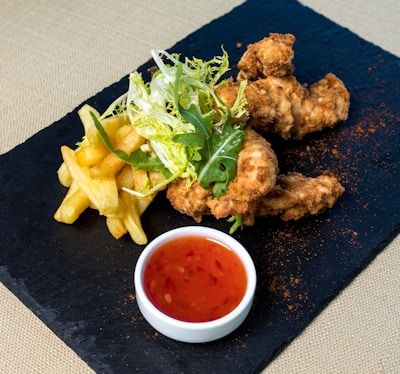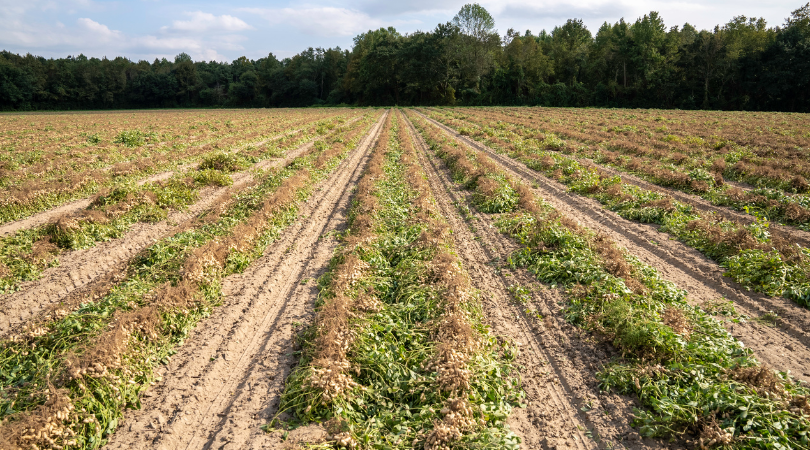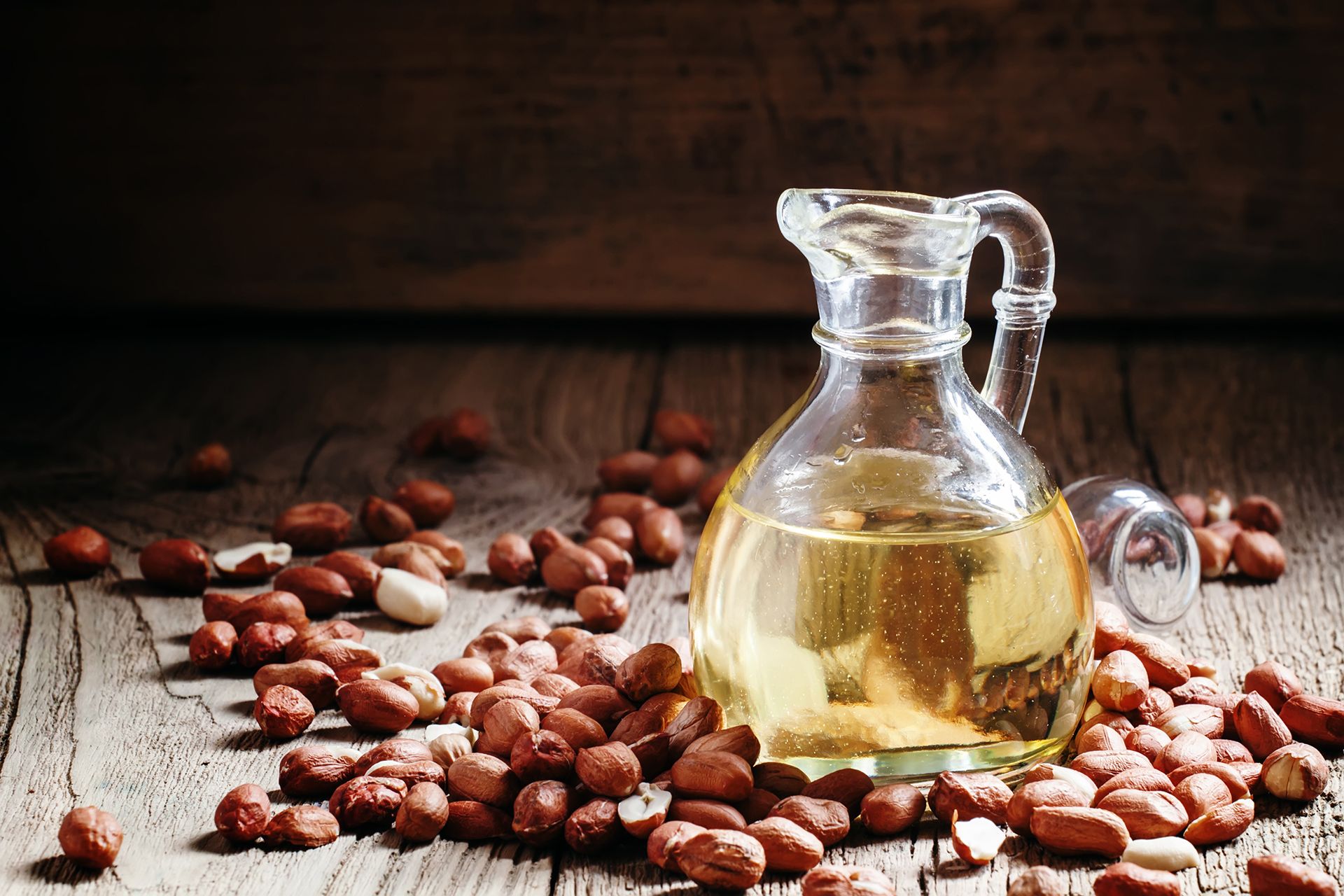May 1
Benefits of Peanut Oil
Benefits of Peanut Oil
May 1
Peanut oil characteristics
Peanut oil characteristics

Peanut Oil, also known as ground nut oil or Arachis hypogaea, is a member of the legume family (Fabaceae) it contains a well-balanced fatty acid and antioxidant profile that provide protection against harmful substances especially free radicals.
Peanut oil is a vegetable oil derived from peanuts. It is a versatile cooking oil that can be used for frying, sauteing, and roasting. Peanut oil has a high smoke point, which means it can be heated to a high temperature without burning. This makes it a good choice for frying foods.


Peanut oil is also a good source of monounsaturated fats, which are considered to be healthy fats. Monounsaturated fats can help to lower cholesterol levels and reduce the risk of heart disease.
It is important to note that peanut oil is a common allergen. If you or someone you know has a peanut allergy, you should avoid using peanut oil.

CULTIVATION OF PEANUT OIL
Peanuts are usually grown in tropical and subtropical regions, but they are originally from the western hemisphere most likely from South America.
Peanuts grow best in in light, sandy soil and most other soil as long as the soil structure is loosened because they grown underground and the need to be able to grow easily without being hindered. Peanuts prefer a soil Ph of about 5.8-6.2

From Field to Fryer: The Journey of Peanut Oil
Peanut oil, a staple in kitchens worldwide, has a fascinating journey from humble seed to flavourful cooking oil. Let's delve into the cultivation process that brings this golden liquid to life:
Planting the Foundation:
Write your awesome label here.
Write your awesome label here.
Write your awesome label here.
- Preparation: The journey begins with well-drained, warm soil. Farmers often rotate crops to maintain soil health and may even add beneficial bacteria to promote growth.
- Seeding: Peanut seeds, technically legumes, are planted directly in the soil. Precise planting depth and spacing are crucial for optimal growth and yield.
- Germination and Growth: Peanut plants are legumes, meaning they have a symbiotic relationship with nitrogen-fixing bacteria in their root nodules. These bacteria convert atmospheric nitrogen into a usable form for the plant, reducing the need for external fertilizers.
Nurturing the Crop:
- Weed Control: Regular weeding is essential to ensure healthy competition for nutrients and sunlight. Some farmers might utilize herbicides for broader weed control.
- Irrigation: Peanuts require moderate watering throughout the growing season, especially during flowering and pod development. Careful management is crucial to avoid water stress or waterlogging.
- Pest and Disease Control: Like any crop, peanuts are susceptible to pests and diseases. Integrated Pest Management (IPM) techniques are often employed, which combine monitoring, biological controls, and targeted use of pesticides when necessary.
Write your awesome label here.
Harvesting the Bounty:
- Maturity: Peanuts are ready for harvest when the leaves yellow and the shells inside the pods begin to harden. Depending on the variety, harvest can occur anywhere from 100 to 150 days after planting.
- Lifting: Specialized equipment carefully lifts the entire peanut plant from the soil, inverting it to allow the pods to dry in the field.
- Thrashing: Once dry, the pods are separated from the vines using a thresher machine. This releases the peanut kernels from their protective shells.
Write your awesome label here.
Write your awesome label here.
From Kernel to Oil:
- Cleaning and Sorting: The harvested kernels undergo cleaning and sorting to remove debris and non-uniform kernels.
- Shelling: The remaining shells are removed using mechanical shellers.
- Crushing and Roasting (Optional): For certain oil types, the kernels are crushed, followed by an optional roasting step, which enhances the oil's flavour and aroma.
- Oil Extraction: The most common method is expeller pressing, which uses a screw press to mechanically extract the oil from the crushed kernels. Alternatively, solvent extraction uses a solvent (often hexane) to dissolve the oil, followed by its removal and purification.
- Refining: Depending on the desired quality, the crude peanut oil may undergo refining processes to remove impurities, color, and free fatty acids, resulting in a neutral-tasting oil.
Write your awesome label here.
Write your awesome label here.
The Final Product:
After these steps, peanut oil is ready for packaging and distribution. This versatile oil finds its way to kitchens around the world, adding a touch of nutty flavour to a variety of dishes. The next time you drizzle peanut oil into your pan, remember the dedication and intricate journey that brought this golden liquid from field to fryer.
Write your awesome label here.
PROPAGATION OF PEANUTS
1. Peanuts need an area which is exposed to a lot of sunlight and has loose and well-drained soil
2. Use a raw peanut. Break open the shell and take the seeds inside. Plant the seeds 2 inches into the soil, and water once a week. Do not over water the seeds.
3. After 30 days when the plant produces a yellow flower mound soil around the base of the plant so peanuts can push into the soil. And keep the plant well hydrated.
4. When the foliage begins to turn yellow, shake off excess soil to allow the plant to dry with the peanut on it for a week.
5. Cut the peanut pods from the plant and spread in a single layer in a cool and dry place to cure for two to three weeks

Peanut oil benefits for skin and hair
Peanut oil benefits for skin and hair
Peanut Oil on Skin
Peanut oil has antioxidant power which helps with skin problems such as irritations and is also help brighten the skin colour while removing dark spots due to the fatty acids, vitamin and magnesium found in peanut oil
Peanut oil has antioxidant power which helps with skin problems such as irritations and is also help brighten the skin colour while removing dark spots due to the fatty acids, vitamin and magnesium found in peanut oil

Peanut oil on hair
Peanut oil can resolve a lot of hair issues.
- It helps with dry scalp conditions such as dandruff and scalp psoriasis by moisturizing the scalp and prevents imbalance between oxidative stress and antioxidant defence in psoriasis.
- Peanut oil is moisturizing and works to help mend split ends and regenerate and revitalize damaged hair.
- Peanut oil contains various fats such as vitamin E, which can reduce hair's protein loss that contribute to thicker, more hydrated, and healthier hair.
- Peanut oil can be used to replenish oil on the hair shaft. "Normally sebaceous glands in our scalp skin secrete oil (sebum) into the hair follicle, which coats the hair shaft.
- Helps de-frizz hair. Frizzy hair occurs due to a lack of moisture in the hair shaft. He notes that coating it with peanut oil seals in moisture to the hair and makes it more manageable.
Write your awesome label here.
Take The Skin Type Quiz
Write your awesome label here.
Oils Herbs Butters & Powders Membership
Write your awesome label here.
Cleansing oil *free course
Online learning communities are essential to achieve a productive online learning environment. This is why they are so popular, especially in higher education.
In online learning, community participants create an interactive canvas of diverse reactions and feedback.
These learning experiences instill a sense of belonging and camaraderie that keeps online learners engaged and motivates them to persevere.
However, most instructors struggle to make learners participate in the discussion board because learners attend the courses in their time-space.
However, there are ways that you can use to gradually establish participation and, in the end, a real sense of community.
In online learning, community participants create an interactive canvas of diverse reactions and feedback.
These learning experiences instill a sense of belonging and camaraderie that keeps online learners engaged and motivates them to persevere.
However, most instructors struggle to make learners participate in the discussion board because learners attend the courses in their time-space.
However, there are ways that you can use to gradually establish participation and, in the end, a real sense of community.
Establish Instructor’s Presence
Don’t forget that your initial postings in the discussion forum, your first messages sent to all by email, or the greeting you post on your course home page will do much to set the tone and expectations for your course....

We are an online educational platform that helps green beauty enthusiasts and aspiring individuals to become world class skincare formulators.
Featured links
Connect with us
Copyright © 2023
30% discount offer!
Click the button to make this offer yours! Limited-time only!

Subscribe now
Get exclusive news
Thank you!

